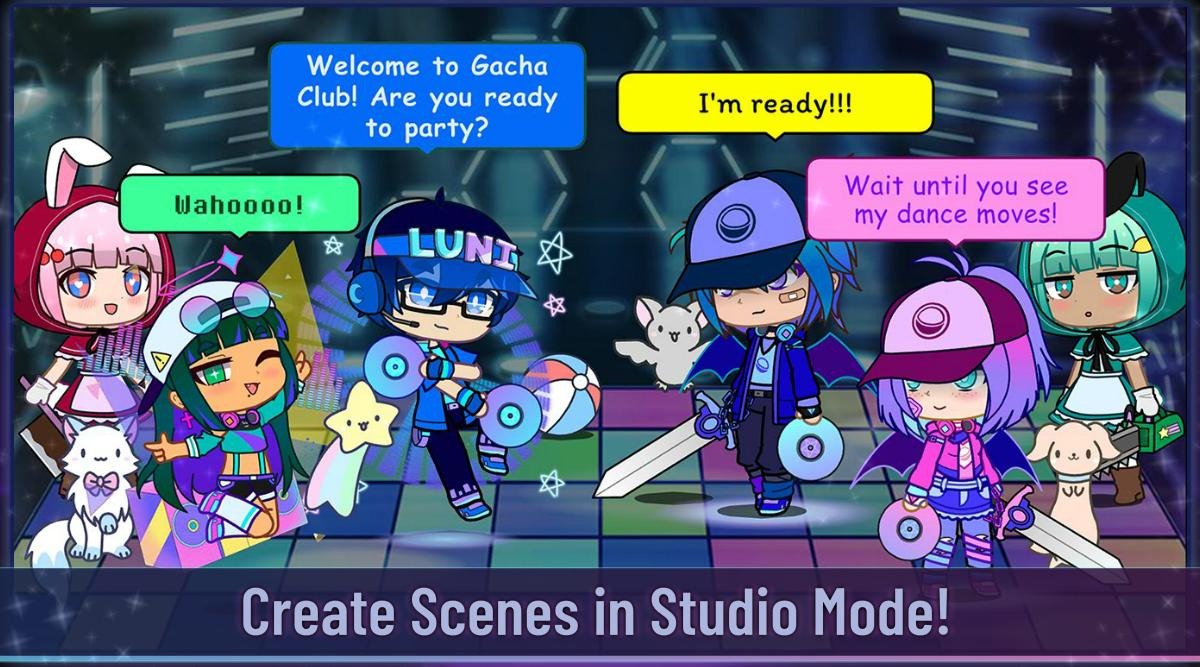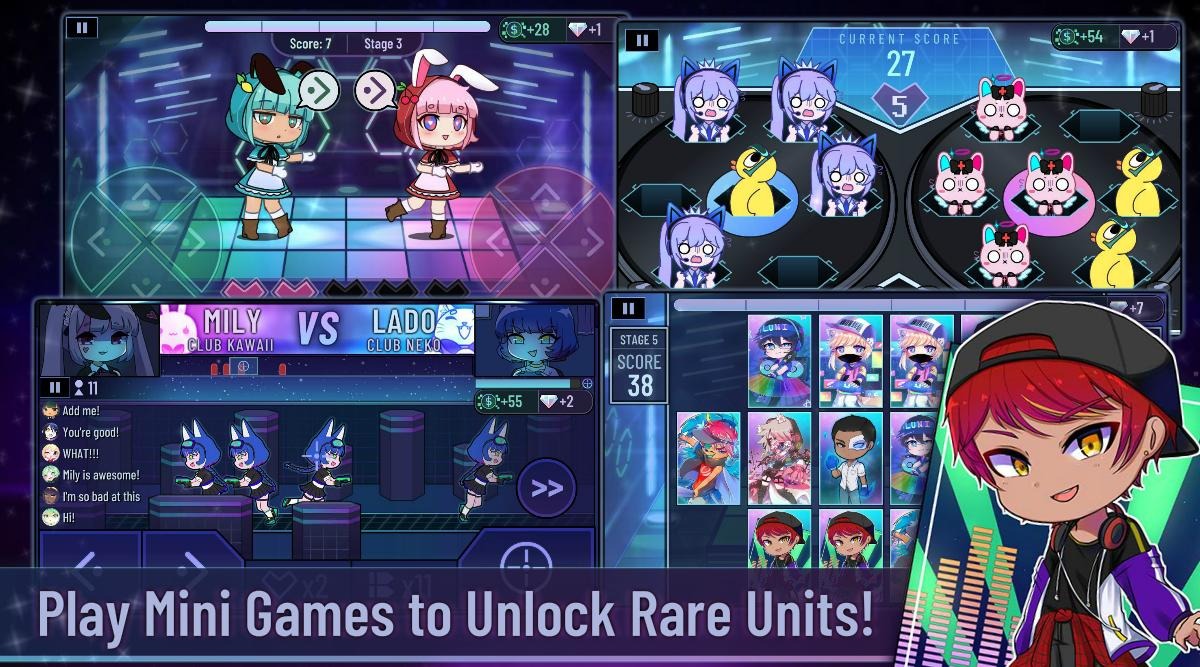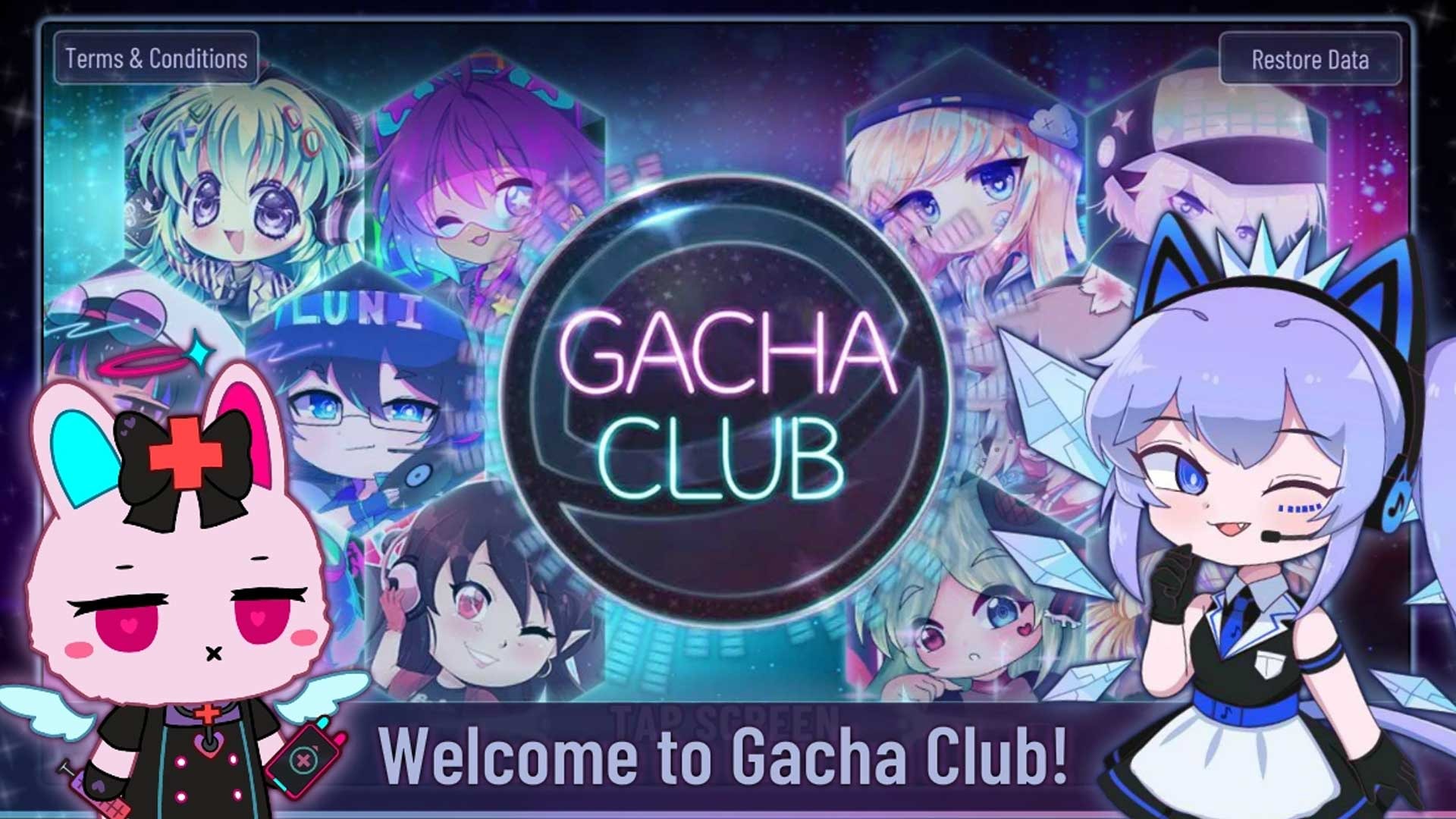
Gacha Club
All trademarks belong to their respective owners. Get GameGacha Club is a fun, free anime-style game where you create custom characters, dress them up, and battle in exciting RPG fights. Design, collect, and play your story!
Beyond Basic Design: Advanced Creation and Storytelling in Gacha Club
Gacha Club might seem like a simple character creation game, but its depth allows for truly advanced design and intricate storytelling. For creators looking to push the boundaries of their digital art, mastering nuanced posing, layered scene composition, and leveraging the game’s hidden depths can transform simple skits into compelling visual narratives. This guide delves into advanced techniques that elevate your Gacha Club creations from basic designs to sophisticated masterpieces.

1. Advanced Character Customization: Nuance and Detail
While the basic customization is extensive, experienced creators delve into the minute details:
- Layering and Adjustments:
- Utilize the “Adjust” feature for every clothing item, accessory, and body part. This allows for fine-tuning size, position, and rotation, creating custom fits and unique silhouettes. For instance, you can adjust sleeves to overlap in specific ways, or move eye accessories to create unique expressions.
- Experiment with layering multiple similar items. Two different shirt types, adjusted and colored carefully, can create a completely new top that doesn’t exist in the default options.
- Color Theory and Palettes: Beyond just picking colors, understanding basic color theory (complementary, analogous, monochromatic palettes) can make your characters visually cohesive and appealing. Use the color picker to select precise shades.
- Outline Customization: The ability to change the outline color and thickness for various body parts and clothing items adds significant depth. Thin outlines can create a softer look, while thicker or colored outlines can make elements pop.
- Prop and Accessory Usage: Think beyond obvious placement. A prop held by a character can be rotated and adjusted to become a hair accessory, a piece of clothing detail, or even part of the background.
- Facial Expressions and “Invisible” Elements: Combine different eyes, eyebrows, and mouths to create nuanced emotions. Use “invisible” items (like certain scarves or head accessories set to zero opacity) to hide parts of other items for cleaner designs or unique shapes.

2. Studio Mode Mastery: Scene Composition and Dynamic Posing
Studio Mode is where storytelling truly comes alive, and advanced users treat it like a digital stage:
- Dynamic Posing and Expressions:
- Don’t rely on static poses. Use the “Pose” menu to adjust limbs, hands, and fingers individually. Even slight tilts of the head or shifts in weight can convey immense emotion and movement.
- Match character expressions (eyes, mouth, eyebrows) to their poses and the scene’s mood. A character leaning forward with narrowed eyes and a slight smirk conveys intrigue, for example.
- Utilize “Adjust” within the pose menu to fine-tune character scale and position for forced perspective or to convey depth.
- Layering Characters and Props:
- Understand the layering system (send to front/back). This is crucial for creating depth, having characters stand behind objects, or creating intricate group compositions where characters overlap naturally.
- Use props not just as items, but as environmental details or even abstract shapes to enhance a scene’s visual appeal. Rotate and resize them for unique effects.
- Background Integration:
- Instead of just picking a background, consider how characters interact with it. Are they leaning on something? Is their shadow cast correctly?
- Importing Custom Backgrounds: The ability to import your own images (from your device’s gallery) opens up limitless possibilities for unique settings. Ensure the resolution is appropriate for best results.
- Lighting and Effects (Implied): While Gacha Club doesn’t have true lighting controls, you can imply light sources through careful coloring (e.g., slightly darker shades on areas that would be in shadow) and by adding “glow” effects from specific props or character aura options.
- Camera Control and Zoom: Utilize the zoom feature and careful character placement to create cinematic close-ups, wide shots, and dynamic angles that mimic professional filmmaking.
3. Narrative and Animation Techniques (External Tools):
While Gacha Club doesn’t have built-in animation, it’s a powerful tool for creating animation frames:
- Frame-by-Frame Animation (Manual):
- Create a “start” pose, take a screenshot.
- Make tiny adjustments to limbs, expressions, or positions.
- Take another screenshot.
- Repeat this process for every subtle movement.
- Use external video editing software (e.g., CapCut, KineMaster, DaVinci Resolve) to stitch these screenshots together, setting each image to a very short duration (e.g., 0.1 seconds) to create the illusion of movement.
- This is how many popular Gacha Club “animations” or “music videos” are made.
- Lip Syncing: Manually change mouth shapes (using the Expression menu) frame by frame to match character dialogue or song lyrics.
- Camera Movement: In external editing, you can pan and zoom on your Gacha Club screenshots to simulate camera movement within a scene.
- Storyboarding: Plan your scenes in advance. Sketch out key poses, camera angles, and dialogue before you even open Gacha Club. This streamlines the creation process.
4. Resource Management and Organization

- Character Slots: Utilize all available character slots. Group characters by story, series, or role for easy access.
- Outfit Slots: Save multiple outfits for each character (e.g., casual, formal, battle, sleepwear) to quickly swap looks for different scenes.
- Item Presets: Save custom color palettes or frequently used item combinations as presets to speed up design.
- Community Resources: Leverage online communities for inspiration, custom assets (backgrounds), and tutorials.
Gacha Club is a fantastic medium for self-expression and digital artistry. By delving into these advanced techniques, creators can unlock its full potential, crafting visually stunning, emotionally resonant, and truly unique narratives that captivate audiences and demonstrate the limitless power of digital imagination.
